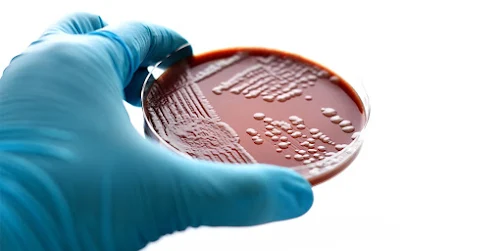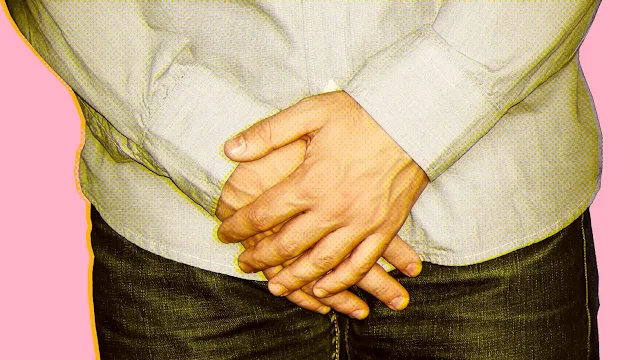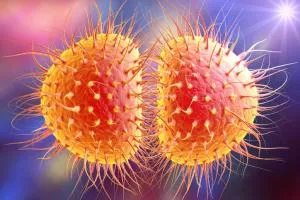Gonorrhea: Symptoms, Causes, Risk Factors, Diagnosis, Lifestyle And Home Remedies
Gonorrhea is an infection caused by a sexually transmitted bacterium that can infect both males and females. Gonorrhea most often affects the urethra, rectum or throat. In females, gonorrhea can also infect the cervix.
Gonorrhea is most
commonly spread during seks.But babies can be infected during childbirth if their mothers are infected. In babies, gonorrhea most commonly affects the eyes.Gonorrhea
is a common infection that, in many cases, causes no symptoms. You may not even
know that you're infected. Abstaining from sex, using a condom if you do have
sex and being in a mutually monogamous relationship are the best ways to
prevent sexually transmitted infections.
SYMPTOMS
In many
cases, gonorrhea infection causes no symptoms. When symptoms do appear,
gonorrhea infection can affect multiple sites in your body, but it commonly
appears in the genital tract.
Gonorrhea
affecting the genital tract
Signs and symptoms of
gonorrhea infection in men include:
- Painful urination
- Pus-like discharge from the tip of the penis
- Pain or swelling in one testicle
Signs and symptoms of
gonorrhea infection in women include:
- Increased vaginal discharge
- Painful urination
- Vaginal bleeding between periods, such as after
vaginal intercourse
- Abdominal pain
- Pelvic pain
Gonorrhea at other sites
in the body
Gonorrhea
can also affect these parts of the body:
Rectum. Signs and symptoms include anal
itching, pus-like discharge from the rectum, spots of bright red blood on
toilet tissue and having to strain during bowel movements.
Eyes. Gonorrhea that affects your eyes
may cause eye pain, sensitivity to light, and pus-like discharge from one or
both eyes.
Throat. Signs and symptoms of a throat
infection may include a sore throat and swollen lymph nodes in the neck.
Joints. If one or more joints become
infected by bacteria (septic arthritis), the affected joints may be warm, red,
swollen and extremely painful, especially when you move an affected joint.
CAUSES
Gonorrhea
is caused by the bacterium Neisseria gonorrhoeae. The gonorrhea bacteria are
most often passed from one person to another during sexual contact, including
oral, anal or vaginal intercourse.
RISK FACTORS
Factors
that may increase your risk of gonorrhea infection include:
- Younger age
- A new sex partner
- Multiple sex partners
- Previous gonorrhea diagnosis
- Having other sexually transmitted infections
COMPLICATIONS
Untreated
gonorrhea can lead to significant complications, such as:
Infertility
in women. Untreated
gonorrhea can spread into the uterus and fallopian tubes, causing pelvic
inflammatory disease (PID), which may result in scarring of the tubes, greater
risk of pregnancy complications and infertility. PID is a serious infection
that requires immediate treatment.
Infertility
in men. Men with
untreated gonorrhea can experience epididymitis — inflammation of a small,
coiled tube in the rear portion of the testicles where the sperm ducts are
located (epididymis). Epididymitis is treatable, but if left untreated, it may
lead to infertility.
Infection
that spreads to the joints and other areas of your body. The bacterium that causes
gonorrhea can spread through the bloodstream and infect other parts of your
body, including your joints. Fever, rash, skin sores, joint pain, swelling and
stiffness are possible results.
Increased
risk of HIV/AIDS.
Having gonorrhea makes you more susceptible to infection with human
immunodeficiency virus (HIV), the virus that leads to AIDS. People who have
both gonorrhea and HIV are able to pass both diseases more readily to their
partners.
Complications
in babies. Babies who
contract gonorrhea from their mothers during birth can develop blindness, sores
on the scalp and infections.
TESTS AND DIAGNOSIS

Photo Credit: istockphoto.com by jarun011
To
determine whether the gonorrhea bacterium is present in your body, your doctor
will analyze a sample of cells. Samples can be collected by:
Urine test. This may help identify bacteria in
your urethra.
Swab of affected area. A swab of your throat, urethra,
vag*na or rectum may collect bacteria that can be identified in a laboratory.
Testing for other sexually
transmitted infections
Your
doctor may recommend tests for other sexually transmitted infections. Gonorrhea
increases your risk of these infections, particularly chlamydia, which often
accompanies gonorrhea. Testing for HIV also is recommended for anyone diagnosed
with a sexually transmitted infection. Depending on your risk factors, tests
for additional sexually transmitted infections could be beneficial as well.
Take steps to reduce your risk of gonorrhea:
Use a condom if you choose to have
seks. Abstaining
from seks is the surest way to prevent gonorrhea. But if you choose to have
seks.
Don't have sex with someone who has
any unusual symptoms.
If your partner has signs or symptoms of a sexually transmitted infection, such
as burning during urination or a genital rash or sore, don't have seks with
that person.
Consider regular gonorrhea
screening if you have an increased risk. Talk to your doctor about regular gonorrhea screening
if you have an increased risk of infection. You may be at increased risk of
gonorrhea if you have had gonorrhea or other sexually transmitted infections in
the past, if you have a new seks partner, or if you have multiple seks
partners.
REMEDY: HOW TO TREAT GONORRHEA
How To Cure Infertility In Women












.jpeg)
Very useful information was shared by author. It’s really help for to know more information about gonorrhea causes.